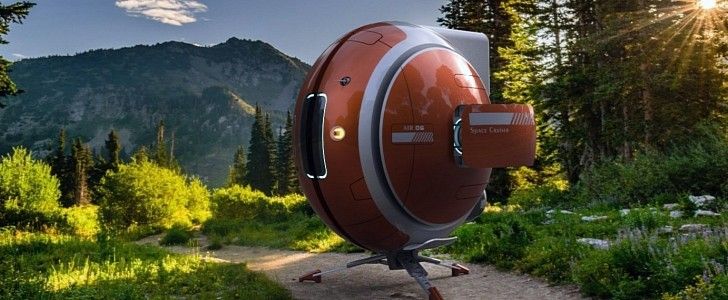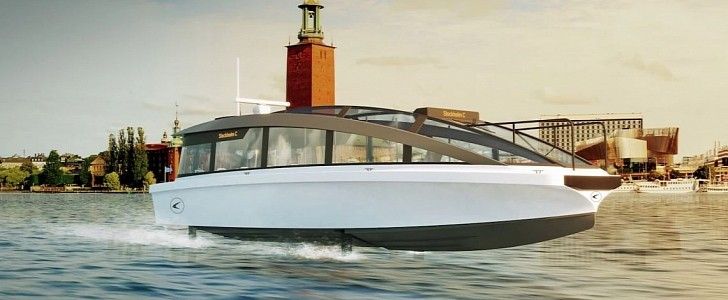There’s no doubt that air taxis will be the next mobility solution that mankind is looking to implement. Actually, this process has been underway for a few years now.



In the future, Tesla’s Autopilot and Full Self-Driving suite are expected to handle challenging circumstances on the road with ease. These involve inner-city driving, which includes factors like pedestrians walking about, motorcyclists driving around cars, and other potential edge cases. When Autopilot is able to handle these cases confidently, the company could roll out ambitious projects such as Elon Musk’s Robotaxi Network.
Tesla’s FSD Beta, at least based on videos of the system in action, seems to be designed for maximum safety. Members of the first batch of testers for the FSD Beta have shared clips of the advanced driver-assist system handling even challenging inner-city streets in places such as San Francisco with caution. But even these difficult roads pale in comparison to the traffic situation in other parts of the world.
In Southeast Asian countries such as Vietnam, for example, traffic tends to be very challenging, to the point where even experienced human drivers could experience anxiety when navigating through inner-city roads. The same is true for other countries like India or the Philippines, where road rules are loosely followed. In places such as these, Autopilot still has some ways to go, as seen in a recently shared video from a Tesla Model X owner.
This is the only solely ion propelled series of aircrafts that can lift their power supplies against earth’s gravity. These prototypes were patented specifically for lifting their onboard power supplies and the widely published patent has been in effect since 2014.
While the craft wasn’t working at full power for this test footage since their was a power loss, the safety tether still went completely loose when the craft was energized, and it is also shown flying outdoors. There is an indoor flight that lasted for almost 2 minutes continually when it was flying at its best. There is a video of that and other sustained flights on this YouTube channel.
Previously all heavier than air ion propelled aircrafts had to be connected through thin wires to large heavy power supplies that remained fixed to the ground.
This series of prototypes have been independently verified to fly with onboard power since 2006. It was necessary to increase the EAD thrust to weight ratio by several orders of magnitude as well as other upgrades to get it operational.
Here is a link to a broadcast about the craft with the host of NPR Jeff Saint Clair. His article and radio program certifies fist hand, that this ion propelled aircraft US Patent number 10119, 527, lifts its power supply:
https://radio.wosu.org/post/exploradio-oberlin-inventor-push…t#stream/0

Sorry, we’re having trouble playing this video.
Learn More.
World Economic Forum.
· YtesiStSrfpserrfenfduaySh atmso hcn9:snet00r orAeMd ·
AI, self-driving cars, robotics and more… all in one place.
Find out more about our upcoming Global Technology Governance Summit: #GT… See More.
European automaker Renault debuted its new cheap electric cars, the Kwid series, in India for a little over $6000 USD. The incredibly low price has left many consumers wondering why certain counties have access to cheap EV cars, while buyers in Europe and the United States are expected to pay more than quadruple that price for similar vehicles. It turns out there is a conspiracy and Europeans and North Americans who want electric cars are getting gouged by automakers, and it all has to do with gaining access to new markets.
The Kwid specifications are nearly identical to a Dacia, also a Renault brand. The difference: a European Dacia is double the price of an Indian Kwid. Meanwhile, the U.S. market misses entirely on either of these vehicles. The only electric cars available in America are dominated by premium brands and high price tags, making them unaffordable for most.
Cheap electric cars are available. The question is, why are Americans and Europeans being ripped off by electric vehicle manufacturers?

Los Angeles to Tokyo in 2.5 HOURS: Supersonic jet firm unveils plane that can transport 50 people at over 3000mph…
However, by the end of the decade, that time could be reduced to just two and a half hours if the vision of Florida-based supersonic jet firm Aerion comes to fruition.
This week it unveiled a ‘first glimpse’ of its AS3TM airliner, designed to transport up to 50 passengers at up to ‘Mach 4+’ — or at least 3000mph.

‘Humans are extraordinarily special’. Not new but well worth remembering.
Either way, their conclusion is that, like stick-shift cars, extraterrestrial civilizations are few and far between. The implication is that our nearest cosmic chums are at least several thousand light-years away.
You may wonder why this story has raised eyebrows. Well, it would make Homo sapiens extraordinarily special, despite the fact that the galaxy is stuffed with planets. It discomfits scientists (including me) because, historically, every time we’ve thought we occupy a privileged position in the universe, we were wrong. Remember that six centuries ago, learned folk would have assured you that Earth was the center of the cosmos.


According to the CEO of CIAM Mikhail Gordin, this is one of the most important projects in modern aviation. The use of a hybrid power plant based on the high-temperature superconducting platform, or HTSP, is designed to solve a number of technological issues that air transport is already facing, he said.
“This is what was done with the Fund of Advanced Studies – an electric airplane based on superconductivity principles,” Borisov said. The electric motor is part of the hybrid powertrain demonstrator that Russia’s Central Institute of Aviation Motors (CIAM) is developing.
An innovative electric motor based on high-temperature superconductors with a capacity of 500 kW (679 HP) was created by materials specialist Superox.
Trials of a promising superconductive aircraft electric motor started on February 5. A special flying laboratory has been created on the basis of the Yak-40 aircraft.